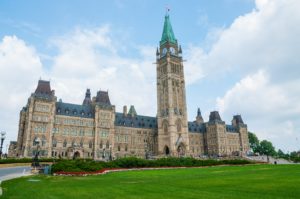
Buying a home is one of the most significant financial decisions in a person’s life. In Ontario, as in many parts of the world, this decision is often accompanied by the need to secure a mortgage. However, the process of obtaining a mortgage isn’t as simple as finding the right home and applying for a loan. Potential homeowners in Ontario must also navigate the complexities of what is known as the “stress test.”
The stress test is a regulatory measure put in place by the federal government and overseen by the Office of the Superintendent of Financial Institutions (OSFI). Its primary purpose is to ensure that borrowers can handle their mortgage payments even in the face of rising interest rates. It’s essentially a financial stress simulation, designed to protect both lenders and borrowers from the potential fallout of financial instability.
Understanding the Stress Test
The stress test assesses a borrower’s ability to manage their mortgage payments at a higher interest rate than the one they’re actually securing. This is done to anticipate and mitigate the risk associated with potential interest rate increases. In Ontario, the stress test applies to both insured and uninsured mortgages.
Insured Mortgages: These are mortgages where the borrower has put down less than 20% as a down payment and, as a result, they are required to purchase mortgage insurance from the Canada Mortgage and Housing Corporation (CMHC) or a private mortgage insurer. For insured mortgages, the stress test is calculated at the Bank of Canada’s five-year benchmark rate or the contractual rate plus 2%, whichever is higher.
Uninsured Mortgages: These are mortgages where the borrower has put down 20% or more as a down payment, and therefore, they do not require mortgage insurance. For uninsured mortgages, the stress test is typically calculated at the contractual rate plus 2%.
How the Stress Test Affects Ontario Mortgage Applicants
Reduced Borrowing Capacity: The stress test effectively reduces the amount you can borrow. By calculating your mortgage affordability at a higher interest rate, it ensures that you can manage your mortgage payments even if rates rise. As a result, you might qualify for a smaller mortgage than you initially expected.
Limited Home Choices: With a smaller mortgage, you may need to adjust your expectations when it comes to the type of home you can afford. It might mean compromising on location, size, or features to fit within your budget.
Stricter Budgeting: The stress test forces you to budget more carefully. To pass the test, you must prove you can afford higher monthly payments, which could require cutting back on other expenses.
Higher Down Payment: To counteract the effects of the stress test, some applicants may decide to increase their down payment to lower their loan amount. This isn’t always feasible for everyone, but it’s one strategy to consider.
Impact on Housing Market: The stress test can also have a broader impact on the housing market in Ontario. It has been credited with helping to cool down hot real estate markets by limiting the number of people who can enter the market as buyers.
How to Prepare for the Stress Test
Budget Wisely: Before applying for a mortgage, create a comprehensive budget. Ensure that you can comfortably cover all your expenses, including the potential mortgage payment under the stress test conditions.
Increase Your Down Payment: As mentioned earlier, a larger down payment can reduce the impact of the stress test. If you can afford to put down more than 20%, it may be a smart move.
Reduce Debt: Reducing your existing debts can free up more of your income, making it easier to meet the stress test requirements.
Shop Around: Different lenders may have varying policies when it comes to applying the stress test. It’s a good idea to consult with multiple lenders to find the best mortgage terms for your situation. This is where a consult with a mortgage broker is so important as they have access to many different lenders, from the traditional “big banks” to private lenders.
Conclusion
The stress test is a crucial financial safeguard designed to protect both lenders and borrowers from potential economic fluctuations. While it can make the path to homeownership more challenging, understanding and preparing for it can help ensure that you can confidently navigate the Ontario real estate market. Remember that consulting with a financial advisor or mortgage specialist can provide valuable insights and guidance in this process. By doing so, you can make informed decisions and move closer to your dream of homeownership in Ontario, despite the hurdles posed by the stress test.
Please contact me for a free consultation on your future home financing, from purchase, to renewing, to refinancing.









